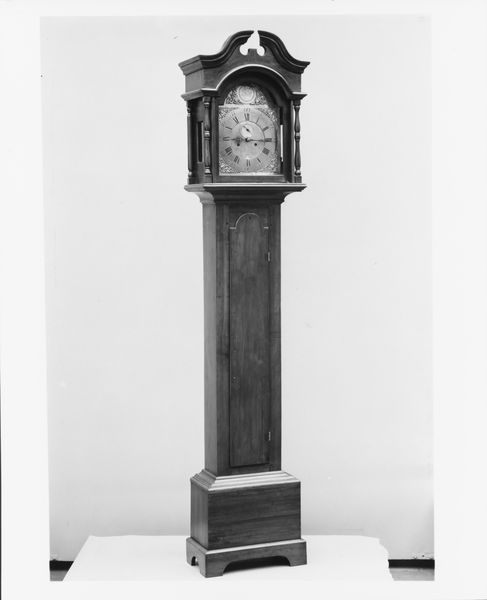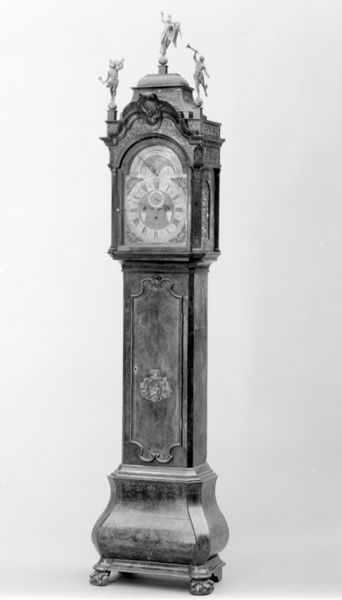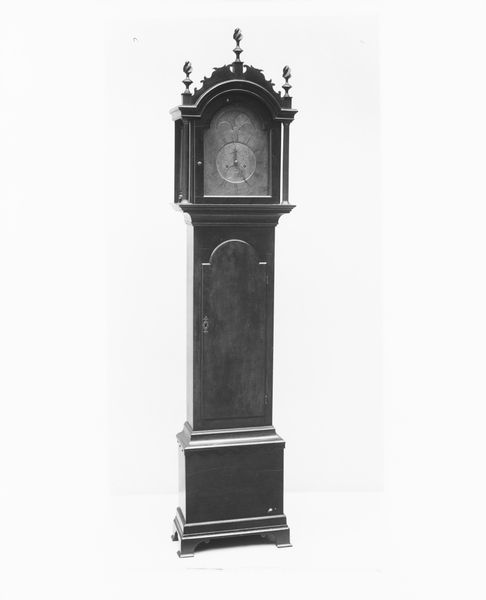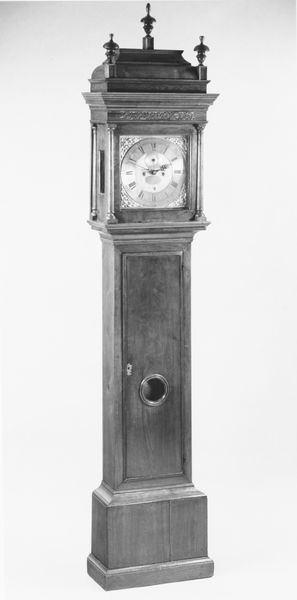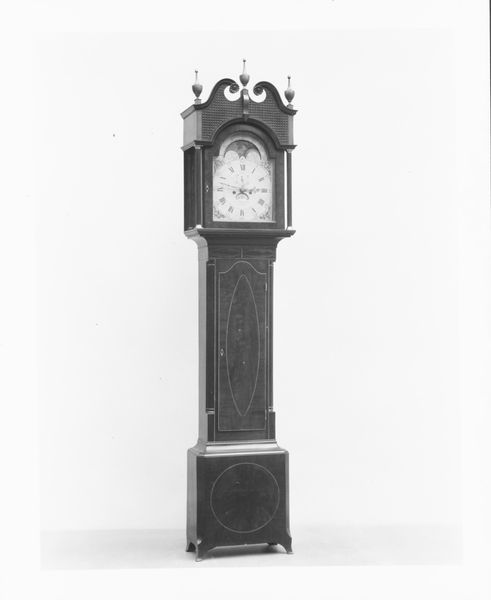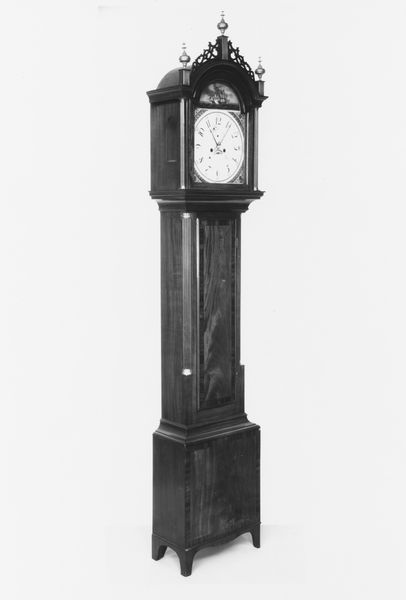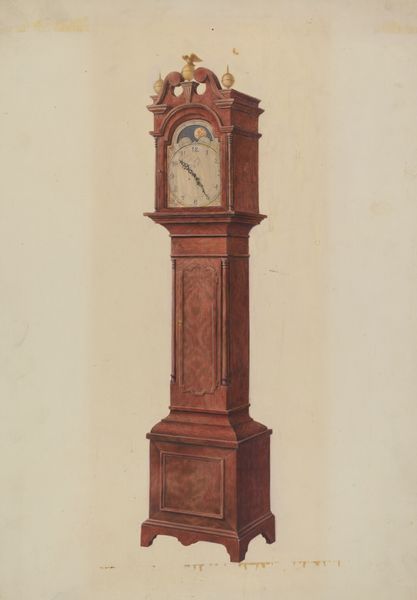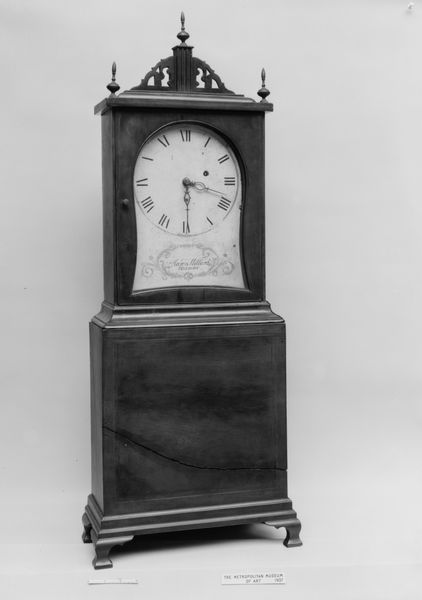
sculpture, wood, architecture
#
baroque
#
sculpture
#
historic architecture
#
sculpture
#
wood
#
decorative-art
#
architecture
Dimensions: Overall: 100 1/4 × 21 1/4 × 10 1/2 in. (254.6 × 54 × 26.7 cm)
Copyright: Public Domain
This longcase clock was made in England by John Ellicott, sometime in the mid-18th century. Clocks like these weren’t just functional time-telling devices; they were statements of wealth and social standing. Think of the context: Georgian England, a society deeply stratified by class. Owning such a clock signalled that you had the means to afford not just the object itself, but also the leisure to care about precise timekeeping. This wasn't for the working classes, whose days were dictated by the sun and the seasons. This was for the gentry, the merchants, those whose lives revolved around schedules and appointments. Now, consider the maker, Ellicott. He wasn't just a craftsman; he was a member of the Royal Society, a hub of scientific and intellectual exchange. That connection speaks volumes about the clock's cultural value. It’s a symbol of the Enlightenment, where science, technology, and artistry converged. To really understand this clock, we might look at trade records to see where the materials came from, or perhaps study the Ellicott family's business dealings. Ultimately, this clock tells us a lot about the values and priorities of a particular time and place.
Comments
No comments
Be the first to comment and join the conversation on the ultimate creative platform.

